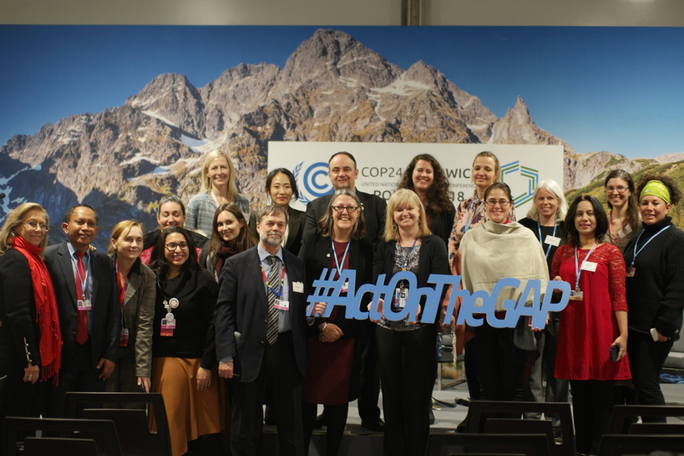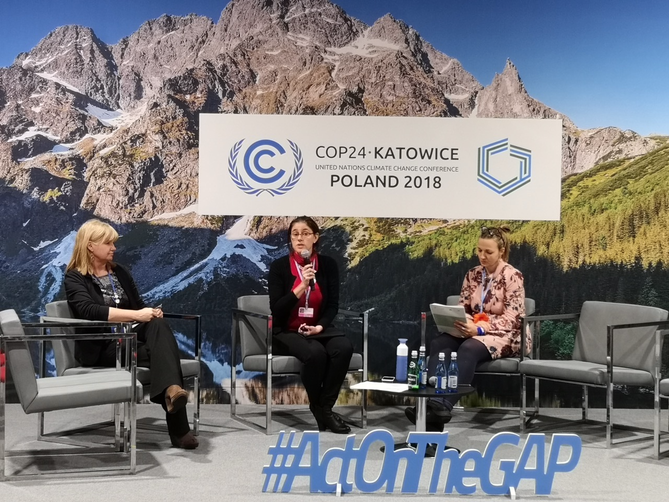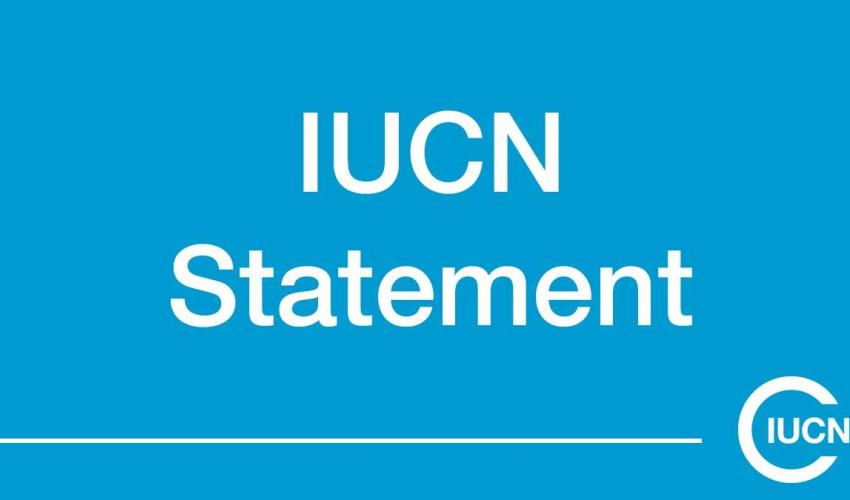Advancing gender equality, women’s empowerment and indigenous rights from COP24 to COP25 through the Paris Rulebook
COP 24 in Katowice faced many challenges that threatened the agreement on the Paris Rulebook including the lack of acceptance by some Parties to recognise and welcome the latest report from the Intergovernmental Panel on Climate Change (IPCC) and a sense that ambition for curving greenhouse gases was falling short. In spite of the above, and after 30 hours of over-run, Parties agreed to a series of guidelines to further implementing the Paris Agreement.

Photo: UNFCCC
On the Paris Rulebook
When the results from Katowice are seen from a gender and social inclusion perspective, they are somewhat encouraging. For example, the Paris Rulebook continues to acknowledge the need to address gender responsiveness in adaptation actions, with references found both on the elements for reporting on adaptation communications (Annex on Elements of an adaptation communication) and as part of the transparency framework (para 109.)¾with Parties being called to provide information on how best available science, gender perspectives and indigenous, traditional and local knowledge are integrated into adaptation.
Moreover, the technology framework decision has the most references¾five¾to gender, whether calling for Parties to apply a gender perspective, as well as recognize endogenous as well as indigenous aspects, when providing support under the framework; or calling on Parties to facilitate enabling environments to promote endogenous and gender-responsive technologies for mitigation and adaptation actions.
Most striking, perhaps, is the clear call to Parties to address and share information on how domestic institutional arrangements, public participation and engagement with local communities and indigenous people are implemented in a gender-responsive manner, as part of the planning process of their nationally determined contributions (NDCs). The inclusion of such text in the guidance for mitigation, and particularly, NDCs is not a minor achievement, with proposals having been on the table for addressing gender responsive mitigation actions since Copenhagen.
 Photo: UNFCCC
Photo: UNFCCC
On gender in the UNFCCC
The Lima Work Programme on Gender (LWPG) and the Gender Action Plan (GAP) have been guiding the coherent discussion on the gender and climate change nexus, as part of the regular agenda items under the Subsidiary Body for Implementation (SBI). The LWPG and GAP have been instrumental for supporting a process to increase capacities and understanding on gender and climate change, both from Parties as well as from constituted bodies. During COP 24 the report on the differentiated impacts of climate change and gender-responsive climate policy and action, as well as policies, plans and progress in enhancing gender balance in national delegations workshop was presented. The report contains, among others, updates on how the constituted bodies are addressing gender equality in their operations.
As part of the efforts to increase capacities and technical expertise on gender and climate change, the UNFCCC secretariat organized a two session workshop with national gender focal points to enhance their understanding of the process and the gender and climate change linkages. The gender focal points also had the opportunity to meet and explore manners to further coordinate and work together.
Additionally, a workshop on gender capacity building for constituted bodies was organized under the platform of the Paris Committee on Capacity Building (PCCB). The workshop allowed for capacity building good practices to be showcased, and IUCN was proud to present the different knowledge platforms it has created on different gender and environment topics - from gender-responsive REDD+ strategies, to mitigation strategies - and the manner in which its climate change gender action plan (ccGAP) methodology leverages knowledge and understanding by both governmental institutions, as well as women’s groups, to identify gender priority actions for implementing climate policies.
Finally, Parties confirmed their commitment to reviewing and strengthening the GAP and the LWPG as part of the process towards COP25. The process for conducting this review was specified as part of the SBI chair conclusions.
On the Local Communities and Indigenous Peoples Platform
The Local Communities and Indigenous People Platform (LCIPP) was established after the Paris Agreement, as a recognition of the need to strengthen the knowledge, technologies, practices and actions of local communities and indigenous peoples, in relation to climate change. COP 24 saw the launch of the facilitative working group for LCIPP, which is tasked with scaling up the experiences of local communities and indigenous peoples when responding to climate change. The facilitative working group is a step towards a stronger recognition of local communities and indigenous peoples as key actors within the UNFCCC process.
Moving further into implementation
As negotiations turn now to COP 25, to be hosted by Chile in close collaboration with Costa Rica, the focus may be on showcasing further good practices for implementation, where gender responsive actions and the involvement of local communities and indigenous peoples demonstrate the benefits and progress they bring to combating and adapting to climate change.
_________________________________________________________
This blog was contributed by Ana Rojas and photos by the UNFCCC.
To learn about IUCN’s governance, gender and rights programming, please visit https://www.iucn.org/theme/governance-and-rights.



